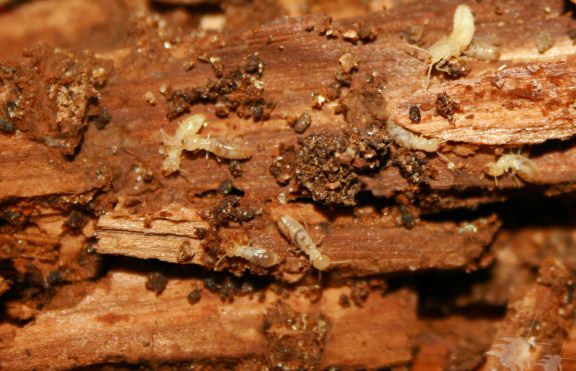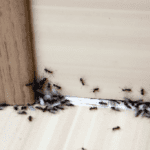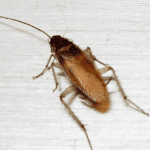What are Termites?

What are Termites?
What are Termites?
Termites (tax. Isoptera) are small insects (3-22 mm) that belong to the category of woodpeckers and that many confuse with ants. Termites live in cooperative, mixed groups known as colonies. Every society has different smells, which make it easier for its members to recognize their comrades and keep their distance from members of other colonies. Within these colonies, there are three main social groups, also known as castes. Reproductive individuals (king-queen-swimmers), workers and hoplites.
Together with worms, termites are the main animal enemies of wood, causing great damage to wooden floors, frames, furniture, wooden objects, as well as to books, fabrics and generally anything that contains cellulose. Most of the time, these damages are incorrectly attributed to ants or moisture.
Termites are much more destructive than worms. They number thousands or even millions in each of their colonies. They can destroy wood that has been infested in a very short time.
Termites usually eat the entire mass of wood, leaving at the end a thin layer of paint, varnish or lining of each wood that destroys.
The insult is most often perceived by the tornado. During swarming, the winged breeding individuals emerge from the mother nest and are called upon to create new nests. These winged atoms are like black flying ants. The difference is that their wings are isometric (isoptera) and that in their body the head, the chest and the abdomen do not stand out.
More about Termites
There are two main categories of termites that concern us.
Underground termites (Reticulitermes balcanensis). These termites are the most destructive. They create their nests in the soil at a shallow depth. Arcades move through the ground to find food. They feed on almost all types of wood in construction and housing but also books, stationery, and generally any material that contains cellulose. They do not produce formed feces, but watery that together with clay, form earthen pipes (tubes) for protection from enemies and light. These tubes are also used to gain access, above ground level, to food sources. Swelling individuals (reproductive individuals) are black with a body length of 5-7 mm. The damage caused by these termites is typical. In the houses they can destroy all the wood that exists to such an extent that in the end it is held only by the paint or varnish that had been applied. They create huge populations and damage can be done in a very short time. Dry wood termites (Kalotermes flavicollis). These termites form colonies with fewer individuals than underground (about 600). Their nests and galleries are in the wood, without contact with the ground. They infect a wide variety of wood species in structures, trees and even battered live. These termites do not make earthen pipes like the underground ones, but there are hexagonal feces like small seeds 0.5-1 mm in their galleries or around small holes that open. The damage they cause to homes is usually on wooden floors after being exposed to some moisture. They are often seen near patio doors first and can then be extended to the entire floor area.
Morphology
Belonging to the order of isoptric insects, termites have six legs and their body is divided into three parts: the head, the chest and the abdomen, but this is indistinguishable. This is also a visible feature that differentiates them from ants. They have hair and other specialized sensory organs, which allow them to easily perceive contact, pressure, odors and tastes. A characteristic morphological difference of the termite compared to the flying ant, which is easily seen with the naked eye, is that the termite has equal wings (in length) while the ant has the front wings longer than the rear.
Swarming
Swelling is characteristic of a long-term termite infestation. It usually coincides with rainy seasons, especially when they start late in the fall. Although termites typically avoid light, winged breeding individuals emerge from the mother nest during the swarm and are called upon to create new nests, thus extending the infestation. This is when a termite infestation is usually noticed. Small tantrums can occur throughout the year. The output of the feathers from the nests is influenced by various factors, such as temperature, humidity, light intensity, wind speed, atmospheric pressure, etc. If conditions are not favorable, the winged termites remain in their galleries and nest. The flight during the swing is rather short and its direction is influenced by the prevailing air currents. Immediately after landing, the winged termites shed their wings, cutting them off.
Read hundreds of articles that will answer any question about #cleansecta by clicking here.




